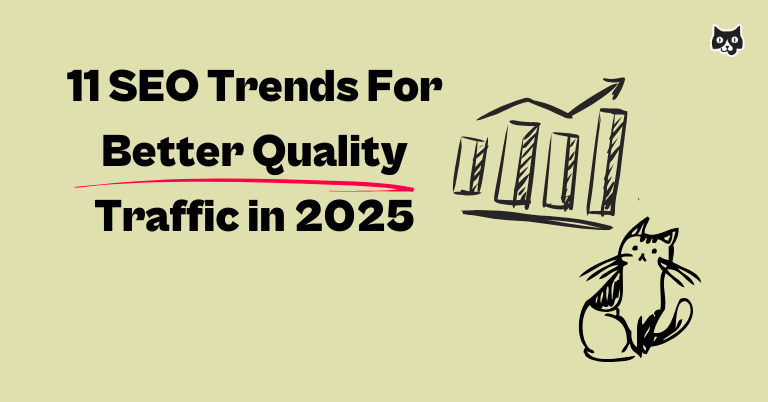If you open a novelty store in a busy location, but nobody comes inside to buy anything, then you aren’t going to be able to keep that shop going.
It’s not that you’re selling something nobody will buy. It may be that you’re selling something lots of people want, but they don’t know that you’re there, or never pass by your store’s location.
If you aren’t targeting the right audiences, then it doesn’t matter how many people see your shop. You still won’t be successful.
In today’s article, we’ve gathered some of the most important SEO trends for you to follow in 2025.
We asked experts on Indiehackers, SEO Facebook groups, Linkedin, and other online communities which trends they’ve noticed over the last 12 months that they think marketers should pay attention to.
This list has the trends that won’t just get you more traffic – it will get you better, more qualified traffic to your site.
These trends will help you with content creation, targeting the right audiences, the importance of design for SEO, and more.
Top SEO trends for 2025
The 11 SEO trends that you should consider for your strategy are:
- Search Generative Experience (SGE)
- Voice search
- Artificial intelligence (AI)
- Video marketing
- Core web vitals and Mobile-First
- Local SEO
- Intent-driven SEO content
- User experience
- Decreasing tolerance for black-hat SEO
- Accessible frameworks and Schema markups
- E-E-A-T
1. Search Generative Experience (SGE)
Search Generative Experience is an interactive AI-based search result to answer from simple to medium-complex search queries. It’s like ChatGPT, but it’s built inside Google search.
According to a Statista 2023 Survey, consumers want AI-search as a product.
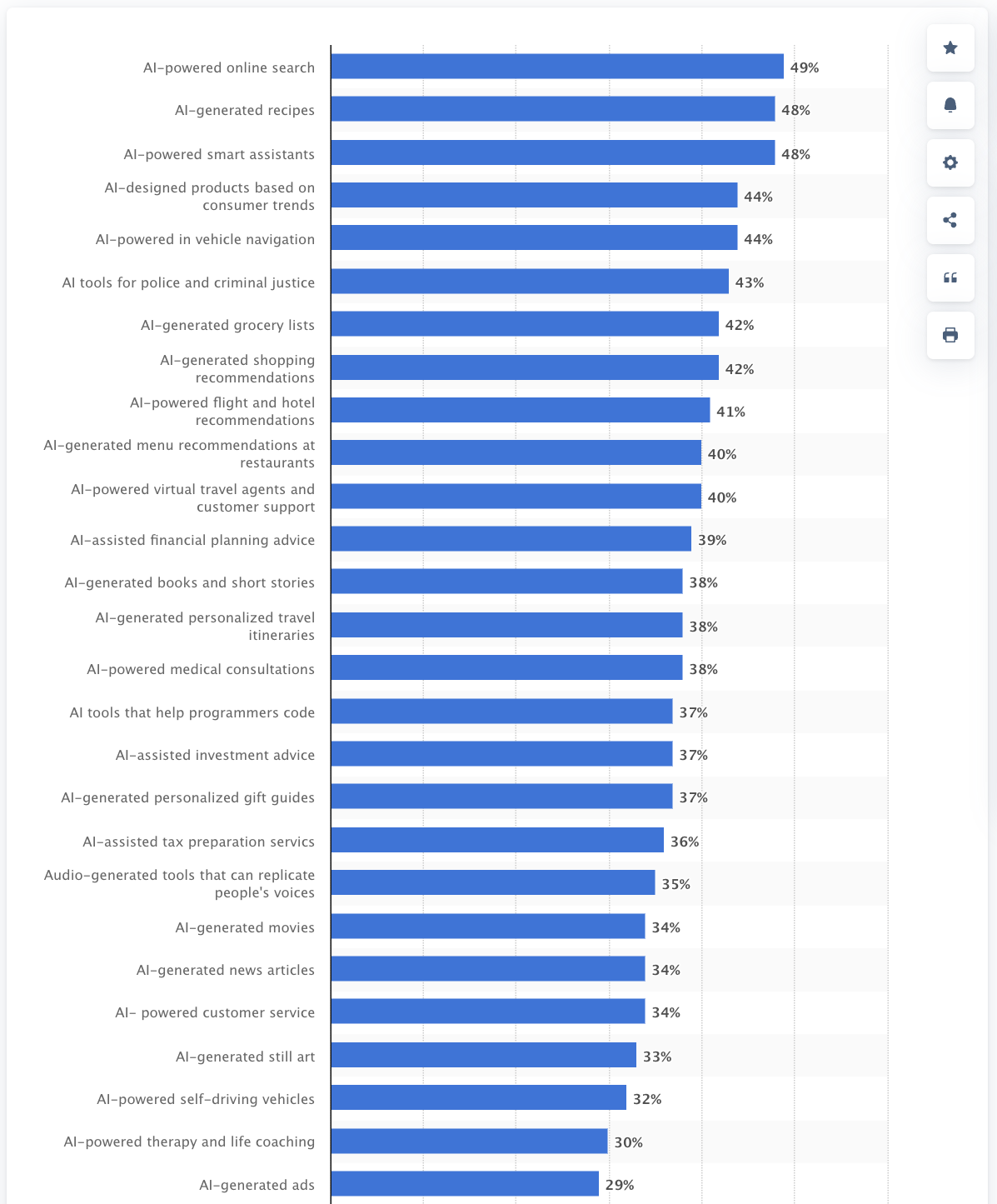
“Google’s Search Generative Experience (SGE) has the potential to completely transform SEO by changing how users interact with search engines and how search algorithms operate.
When SGE uses machine learning or generative AI to generate search results dynamically, it may prioritize highly customized and individualized material for every user query. It will put to the test conventional SEO techniques that aim to rank highly for particular keywords.
Source: ProSEO .com
Then, SEO tactics may need to change to put more of an emphasis on user intent, user experience, and content relevancy. Rather than focusing only on keyword optimization, they should strive to generate valuable and entertaining content that fits the needs and tastes of users. This change might call for a more comprehensive strategy for SEO, ” says the CEO of The Links Guy, Amit Raj.
Banish Angural from Banish Media predicts that SEO specialists & marketers should pay really close attention to optimizing the website to show up in the SGE or Search AI results.
2. Voice search
62% of Americans over the age of 18 own some form of voice assistance technology. And, 50% of US consumer use voice search voice search on a daily basis. If this isn’t a sign to optimize your content for voice search, I don’t what is.
Websites can optimize for voice-activated technology, often taken straight from segments optimized for featured snippets, by writing content and definitions out in Q&A format on each blog post.
This can be as easy as a definition section at the beginning or including an FAQ in each blog post. By making content simple and easy to understand, it is more likely to be dictated to users.
Imagine that you’re writing your definitions to be optimized for Alexa to read aloud: “Alexa, what is X?” “X is …” This optimizes your piece for SERP features as well as search.
Do you know how people are using Siri, Google Voice or Alexa to ask questions? Well, optimizing your content for those voice searches is ideal. Think about using more natural language and longer phrases people might say out loud.
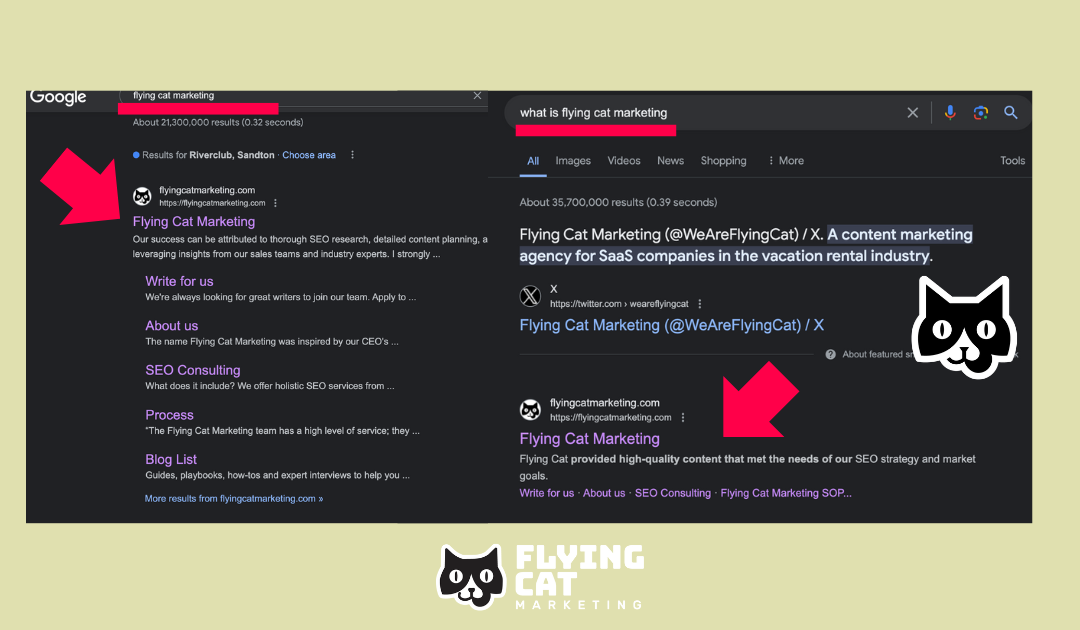
Matthew Ramirez from Rephrasely says that the prevalence of smart speakers in households is increasing, leading to a rise in the use of voice search as a common practice. People are turning to voice search for a variety of tasks, such as finding recipes or movie showtimes, highlighting the importance of optimizing your website for this trend.
Stockbridge Truslow, Technical SEO expert at WSI Digital Marketing of Connecticut, says “with voice search (and voice response to questions), and Google generally trying to make sense of what role every code block plays, the aria labels, semantic tags, and accessibility markup all go toward making that easier for Google, too.
Many of these elements are already used and affect your search appearance from basic alt-text in images all the way up to nav roles and header/footer/sidebar declarations.
Other elements could be used, but Google’s not quite there yet.”
Very closely related to this is Semantic Search Optimization. According to Mike Falahee from Marygrove Awnings, search engines are getting better at deciphering the context and intent of user queries due to developments in natural language processing.
He says that from relevant synonyms to related phrases and natural language variations, marketers should concentrate on producing content that adheres to the rules of semantic search. Marketers may increase their chances of ranking for a wider variety of linked inquiries and drawing higher-quality visitors by optimizing content for semantic search. This trend highlights how crucial it is to comprehend user intent and produce thorough, contextually relevant content that appeals to both users and search engines, eventually resulting in more focused and interesting website traffic.
3. Artificial intelligence (AI)
Search engines like Google use AI and machine learning to provide the most relevant results for any search.
Dev Chandra, Founder of the Process Hacker says that Jasper AI, ChatGPT, Writesonic, and Gemini AI are phenomenal for ideation and outlining. Still, they should be treated as something other than a complete content solution for businesses. Businesses can also use AI writing assistants to overcome writer’s block, brainstorm headlines, suggest transitions, or even rephrase clunky paragraphs. This can be particularly valuable when under tight deadlines.
“The recent Google Core Update raises questions over the use of AI-generated content. Google previously said that they wouldn’t penalise sites that use AI in their content creation.
But, the fact remains, AI content regurgitates what’s already on the web, and is unable to add anything new or unique. Google essentially values insightful, focused and unique content written for your end-user. Their E-E-A-T guidelines mean that websites need to create high-quality content and demonstrate how they’re providing fact-checked, truthful information.
The recent update specifically mentioned “scaled content abuse”, which refers to websites that pop up with tons of articles created by AI, and are publishing at a high-velocity. If you’re using AI in this way to create volumes of content without any human input or review, warning bells should be ringing.
However, the use of AI can still be helpful. We should be using AI to assist the human-led editorial process, speeding up areas that are time-consuming. Then working hard then bring the human touch, some uniqueness, and your own brand voice to your final pieces. Ultimately, quality content is what it’s all about!”, says the CEO of SEO Works, Ben Foster.

Even though Google and other search engines don’t reveal exactly how their AIs operate, understanding the clues that they do provide can help you better optimize your content for the AI systems.
There are also AIs that can help webmasters and writers optimize content while they work, speeding up the process and helping with writer’s block.
Other companies and sites have started to use tools like Clearscope and Frase during the copywriting process to help optimize content as it is written.

Jarvis, an SEO tool that helps copywriters while they write content.
4. Video marketing
45% of marketers agree that video is one of the best performing content marketing formats in 2024. A 2024 study by Wyzowl states YouTube as the most popular video marketing platform, used by 90% of video marketers. Around 86% use Facebook, while 79% use Instagram and LinkedIn.
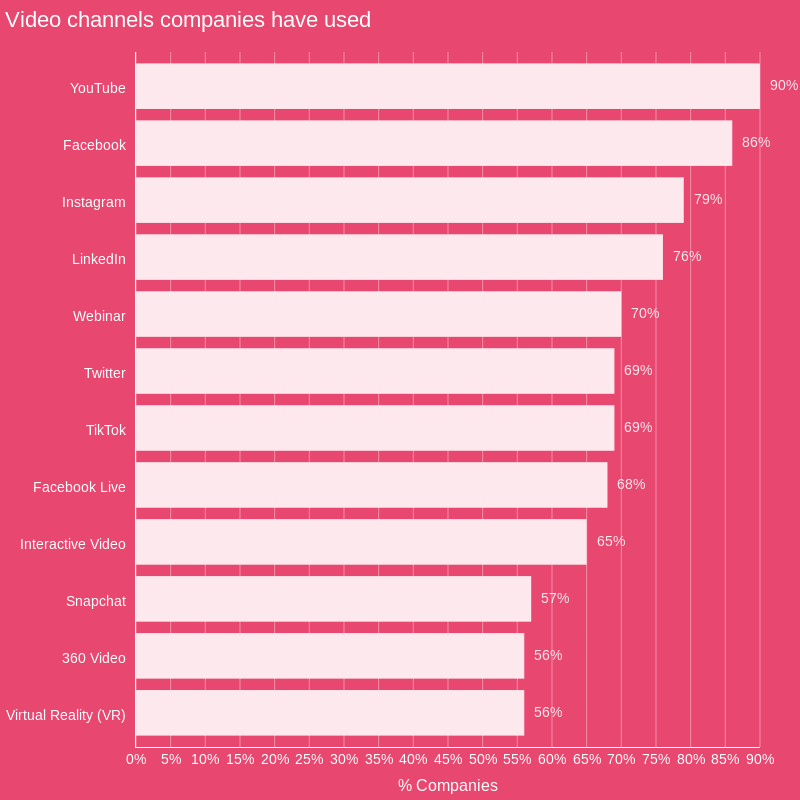
Theo Dufort, owner of Hitz Boost says “The 2 trends that I would see growing are Youtube SEO and Podcast SEO.
“With platforms like YouTube being the second largest search engine, we’ve been integrating video marketing into our SEO strategies, optimizing video titles, descriptions, and even transcripts. This not only boosts visibility but enhances user engagement, making your brand more relatable and accessible “, Marc Bishop from Wyt Labs says.
AccessWare’s Mohammed Elkhalek said with the growing popularity of visual search and the prominence of video in search results, marketers should optimize their images, videos, and other visual assets to improve their discoverability and appeal to users.
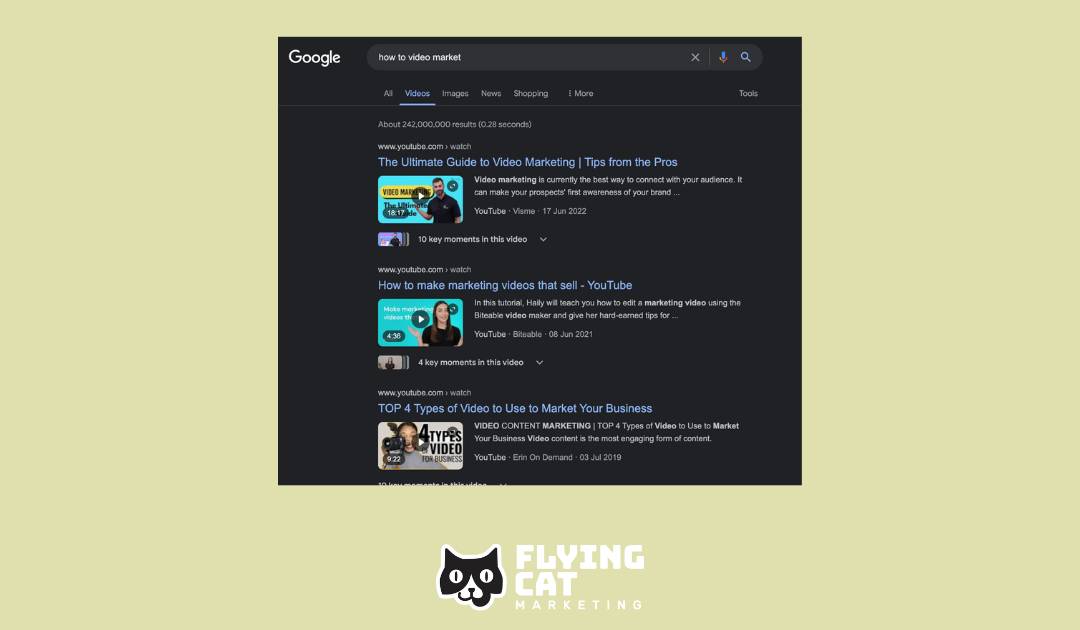
5. Core Web Vitals and mobile-first
Core Web Vitals are a set of three metrics that Google uses to score a user’s experience when loading your webpage.
These three SEO metrics include visual load time, stability, and interactivity with First Input Delay (FID).
“This trend stands out particularly because of the introduction of Google’s Core Web Vitals metrics. These metrics, focusing on factors like page speed, interactivity, and visual stability, highlight the importance of optimizing websites for seamless user experiences across all devices.
Marketers need to prioritize mobile responsiveness and fast loading pages to ensure a positive user experience, which directly correlates with better-quality traffic,” says Shubham Singh from Demand Sage.
Head of Content at Perrfy, Ben Guzovsky says “My most contrarian take: Core Web Vitals will only get more important. Now that Google has raised the bar, a race to perfect performance is coming. This race isn’t about ranking factors, it’s about chasing better UX.”
As more and more searchers default to their mobile devices, adopting a mobile-first approach becomes a more impactful SEO bandwagon to hop on.
Creating high-quality content that is meant for mobile-first indexing can help improve a site’s search rankings.
Ginte Vėžauskaitė from Calconic explains “Core Web Vitals, and especially mobile experience optimization.
Lots of tools fail to notice that bit by bit mobile traffic is taking over desktop and if the mobile version is not optimized it can really affect your bounce rates and rankings.”
Andy Killworth, Head of SEO at iTech Media, also says “increasing maturity of mobile users. As mobile tech and connections improve (and mobile user numbers grow), people are more demanding and more impatient.
As digital marketers, we need to ensure we take a ‘mobile-first’ approach to our work and put our customers first.”
Karissa Mae Paradeza, a freelance SEO Expert, agrees. “Strict mobile-friendliness and mobile site speed optimization.
Based on different studies, organic traffic, marketing qualified leads, sales qualified leads, and successful transactions and sales come from mobile phones, with the increase of the number of people using smartphones, it is a no-brainer that Google will see this trend and ask websites to better improve mobile UX, navigation, and speed.”

There are 5.44 billion unique mobile phone users worldwide ( We Are Social, 2023)
6. Local SEO
Marketers need to optimize their Google My Business profiles, elicit customer reviews, and leverage local citations to improve visibility in local search results and attract quality traffic from relevant geographic areas.
Jesus Meca, Founder Real Focus Marketing, says “I’ve seen multiple companies with ‘near me’ pages targeting national search terms like “plumbers near me” lose against localized companies.
I don’t see that many in the ‘near future’, but I see Google blending their results to be more close to a combination of a search engine, social platform and data provider.
The current landscape for searches with featured snippets, knowledge panels, ‘also asks’ (FAQ) sections, video, images, data, etc., seems that it won’t slow down.”
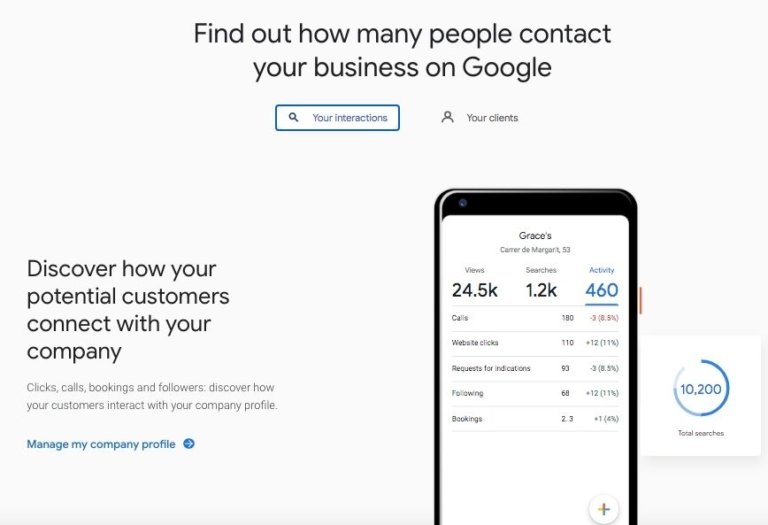
7. Intent-driven SEO content
Providing content that best satisfies a user’s search intent is Google’s main goal. Optimizing so your content acutely satisfies your audience’s search intent is a sure way to improve your ranking.
“As search engines evolve, they’re becoming increasingly adept at understanding not just the words users type into the search bar, but the intent behind them. This shift marks a departure from the old-school SEO playbook of keyword density and backlink strategies, steering us towards a more user-centric approach.
Intent-driven content is all about aligning your content with the needs and desires of your audience. It’s not enough to sprinkle keywords throughout your article and call it a day. Now, you need to dive deep, understanding the why behind the search queries. Are your users looking to buy, to learn, or simply to find a quick answer? Your content must match these intents not just accurately, but compellingly.
This approach demands a richer, more nuanced understanding of your audience. It’s about creating content that answers questions your users haven’t even fully formed in their minds yet. It involves:
- Researching beyond keywords: Look at the questions people are asking in forums, on social media, and in the comments sections of related content. Tools like Answer the Public can provide insights into the variety of queries related to your keywords.
- Creating comprehensive content: Once you understand the intent, your content should address these queries fully. This could mean longer, more detailed posts, FAQs, or how-to guides—whatever format best serves the intent.
- Optimizing for featured snippets and PAA boxes: Google’s featured snippets and “People also ask” boxes are prime real estate for intent-driven queries. Formatting your content to be snippet-friendly can give you a direct line to users.
- Iterating based on performance: The landscape of intent can shift, so it’s important to monitor how your content performs and adapt as necessary. Use analytics to see what’s resonating with your audience and what’s not, then tweak your strategy accordingly.
Focusing on intent-driven SEO content not only improves your search rankings but also enhances the user experience, leading to higher engagement, better conversion rates, and a loyal audience that trusts you to meet their needs. In the fast-paced world of digital marketing, that’s as good as gold, ” says Cache Merrill, Founder of Zibtek.
8. User experience
User experience (UX) is an element that Google looks at to determine how users feel when visiting your site.
CEO and Founder of Overhorizon Media, Michal Hajtas, says the SEO trend to pay attention to is “the simplicity of the article.
The majority of people reading articles might not be native in English, therefore, the article needs to be easy to read and understand.”
One main factor of the user experience is a website’s user interface.
On-page elements like the way that the pages are organized, how easy it is to navigate, and how pleasant the overall site design is to visitors contribute to the overall UX and page ranking.
Christopher O., B2B Brand Copywriter & SEO Strategist, says “the shift to UX [is an SEO trend to watch out for].
UX is no longer something for the design-focused teams alone, but important for SEOs alike.”
Vinika Garg from Webomaze said that user interactions and engagement metrics were prominent over the last 12 months. A website with a high rate of user interactions and engagement metrics is deemed valuable. As a result, it has a greater chance of attaining high SERP rankings and better-quality traffic.
A high rate of user interactions comes from positive user experience. Positive user experience boosts engagement metrics like time spent on a website, frequency of returning visitors, and click-through rates.
Likewise, if a user gets benefits or a positive experience from a website or its content, they are likely to share it on social media. It can increase the website’s authority and visibility, indirectly increasing SERP rankings and traffic. Nevertheless, a brand should refrain from spammy practices to boost user interactions, which can be detrimental.

9. Decreasing tolerance of black-hat SEO
Any site using black-hat SEO strategies always ran the risk of getting penalized or taken down, but recently search engines like Google have grown more and more alert of these tactics being used.
As Google continues to crack down on this behavior, it becomes a growing risk to your SEO efforts.
SEO Consultant, Taylor Scher says, “I’ve noticed that low-quality backlinks have been almost completely devalued. Links are still one of the most important ranking factors, yet low-quality, content farms have almost been entirely devalued at this point. This causes people to say that link building doesn’t work. They’re partially right, it’s just the link building they’re doing doesn’t work.
If you’re focusing on building highly relevant and authoritative links, then it will absolutely make a difference for your SEO.
Me getting a link from HubSpot will be like pouring gasoline on my SEO fire, while a link from a small parenting blog will just be tossed in the garbage. It won’t harm your SEO; it’ll just be a waste of time and money.”
The best option is to steer clear of these tactics entirely and to abide by the search engine guidelines and choose different best practices to apply to your SEO strategy.
10. Accessible frameworks & schema markups
Stockbridge Truslow, technical SEO expert at WSI Digital Marketing of Connecticut says “accessibility and use of semantic markup” are the trends to keep an eye on.
“Properly marked up elements, labels, and so on all help machines understand your content so they can be understood and used screen readers, tab-key navigation through the page and site, and so on.
So many of the current themes and visual builders ignore or confiscate things – especially (in the case of the page builders) if the person creating the page or elements aren’t aware of the signals that these special tags send.
With a little effort, and knowing what to look for when choosing a theme, you can generally build a site that hits around 75% compliance right out of the box.
The other 25% are things that need to be done on each page (like image alt tags, not manually messing with font sizes and colors to prevent fails, and so on).
Even if the content team follows nothing, having a good accessible framework both helps rankings a bit and, maybe more importantly, helps Google understand and properly rank a page quite a bit faster than without.
So, while any push for accessibility nowadays tends to come out of the legal/compliance department, it really should be a big part of any SEO plan.”
Fernando Cordeiro, Founder of Pluckd, says “Explainability: with the invigorated demand for transparency (especially surrounding ML), search tools will start adding explanations to end users on why a page was ranked first.
[The same way] the abundance of no-code tools to create web pages made “technical” SEO optimization (sitemaps, having the right HTML elements, mobile performance, etc) become a given, watch out for the emergence of content creation tools that level the field for content strategy.”
Related post: SEO-Friendly URLs: How to Create a URL Google AND Users Like
11. E-E-A-T
E-E-A-T is an acronym for experience, expertise, authoritativeness, and trustworthiness. Google uses E-A-T to determine how useful your page is to users.
E-E-A-T helps measure the user experience quality on your site. It shows you’re a trusted source that publishes a lot of high-quality content on a certain topic.
“You need a deeper understanding of what users are seeking and the quality of content they expect. The internet landscape is saturated with information, tailoring content to answer specific user intents has become paramount. Move beyond keyword stuffing to create content that genuinely addresses the queries and needs of the audience. Your content needs to be credible and valuable to your users. Websites that provide a rich experience, demonstrate expertise, and establish authority in their niche are seeing a noticeable improvement in quality traffic”, says Sahil Kakkar, the CEO of RankWatch.
Andy Killworth, Head of SEO at iTech Media agrees. “Sites which blanket cover a given topic from as many angles as possible (commercial, non-commercial, blog, news etc.) are rewarded by Google.
Choose the niche and focus on a site or section of a site and double down on it.”
And it’s not just what you say, it’s how you say it that matters too. Omid Ghiam, CEO of Marketer Milk says, “I’ve seen the trend of talking in the first person doing well. Speaking directly to the reader and using the pronoun “I” with real first-hand experience on a topic has shown a lift in keyword rankings not only for my own website but also for my clients as well!”
SEO Strategist, Leigh McKenzie, says that you need to present your article in a warm, conversational way. At Backlinko, that means writing articles in the second person with phrases like ‘you’ll learn’ or using the plural first-person ‘we,’ the content takes on an inclusive, one-on-one tone.
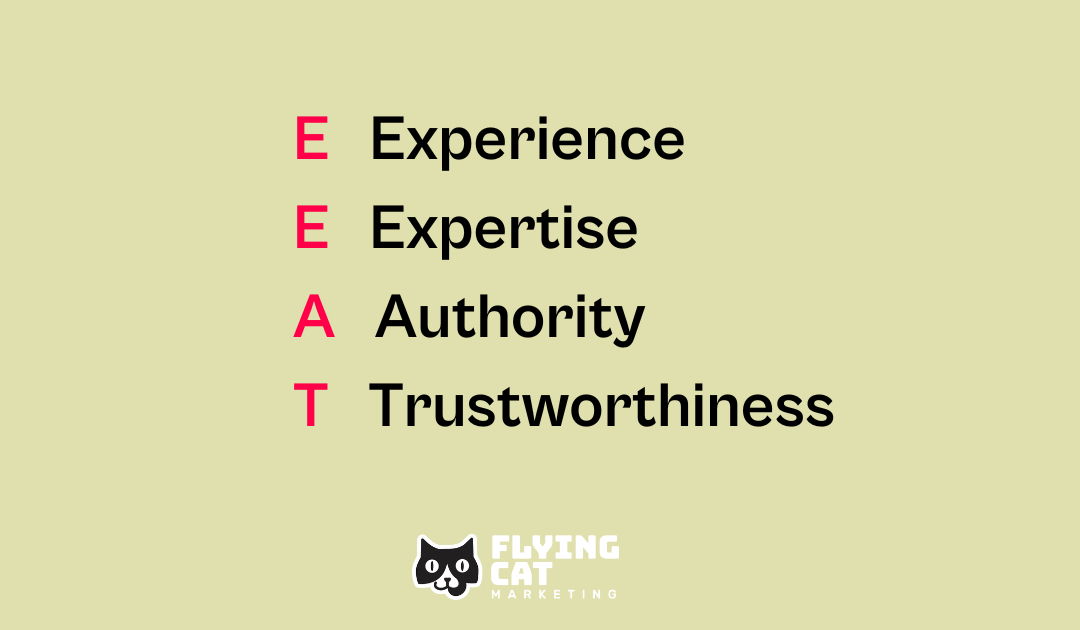
Takeaway
There are a lot of different SEO trends building steam, and different efforts will give you better results depending on your target audience.
That said, if there were any to really keep an eye out for and try to integrate into your strategy, this post has you covered.
Any of these trends in 2025 will not just drive traffic – they’ll drive better, more qualified traffic to your site.
